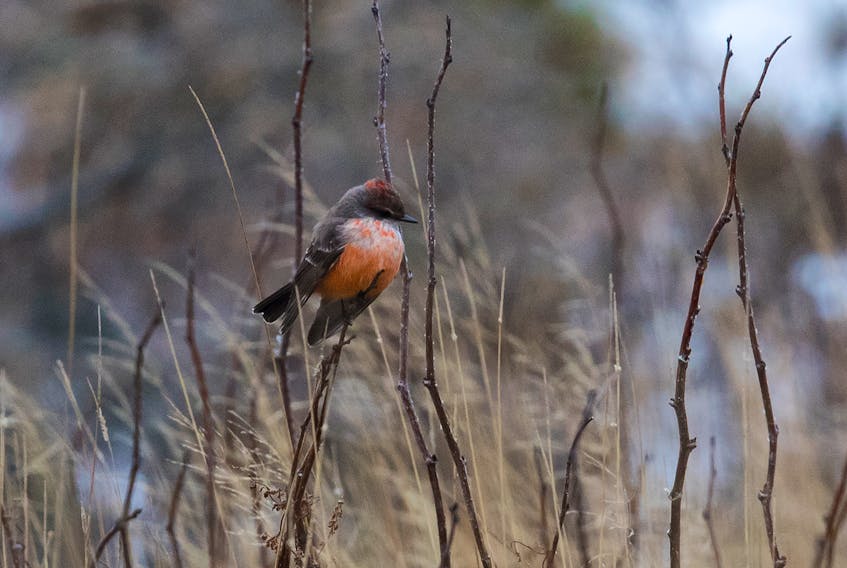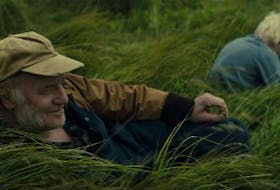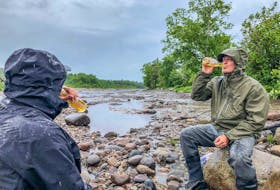The year 2020 will go down in world history for a pandemic. It affected everyone. If you were lucky it affected only your lifestyle.
The birding force was impacted in the spring as restrictions on unnecessary travel from home were imposed. Access to a few important birding areas such as Cape Spear and Cape St. Mary’s was denied by barricades and signage.
Social distancing became a new habit.
As we moved into summer restrictions were eased and we returned to something close to normal life with a few precautions.
Overall the effect of the pandemic on birding within the province of Newfoundland and Labrador was minor.
What were the rare bird highlights of 2020 of Newfoundland and Labrador?
The island of Newfoundland and the big land of Labrador are two different geographical entities when it comes to birdlife. I will pick the top five rarities of 2020 from Newfoundland and separately from Labrador.
The rare bird of the year in Newfoundland — hands down — was the vermilion flycatcher at Indian Head Park, Stephenville. It was a first sighting for the province and one of the few for Canada. This flashy flycatcher is at home in Arizona and south through Mexico and Central America. It was found on Nov. 18 by Kathy Marche and somehow against the odds managed to survive until at least Dec. 14. During this time period it drew birdwatchers from all across the province.
It was a real crowd pleaser, even making the radio news.
In second place for rare bird of the year was the Eurasian oystercatcher at Elliston, Bonavista Peninsula on April 5-8. It was present long enough for those willing to pass under the COVID-19 radar watchers to see it. It marked the first time birders drove several hundred kilometres in separate cars rather than sharing rides to see a big time rarity. It was the fifth record for the province but only the sixth for North America.
No. 3 on the list was another European vagrant in the form of a corn crake. This highly secretive marsh bird flushed out of the grass at Cape Race on Sept. 26 was seen by just two lucky observers despite a serious effort by a dozen birders to relocate it later the same day.
No. 4 on the rarity list goes to European duck called a garganey. It is an attractive duck closely related to the teals that is becoming an annual spring treat in eastern Newfoundland. But because of its overall rarity in North America, its natural good looks and its thoughtfulness to show up in St. John’s where most of the birders live, it gains a place on the top five rarities on the island in 2020. West coast birders think the Avalon Peninsula gets all the luck when it comes to rare birds. However, No. 5 on the best rarities of 2020 goes to the province’s second ever red-headed woodpecker at O’Regans, Codroy Valley. Only west coast birders got to see this one during its short three day visit in mid-November.
Birding in the Big Land
Labrador is a different kettle of fish.
Being part of the mainland of North America it has a different slant on the overall birds compared to the island of Newfoundland. Labrador is also closer to Iceland than the Newfoundland so presumably receives more Icelandic strays.
But there are not many people there to see them.
The No. 1 rarity of 2020 in Labrador was common shelduck. This is a European species of duck that is increasing as a nesting species in Iceland. After a strong easterly flow of air a common shelduck was legally hunted near Nain on April 11. Not to be outdone Vernon Buckle found another common shelduck at Forteau on Dec. 11 which stayed to the end of the month. These were the fourth and fifth records for the province as a whole.
The same spring winds that carried the Nain shelduck also brought the greylag goose — No. 2 rarity — to Mulligan, Lake Melville on April 12. It too was also hunted. It represented the first record for Labrador and third for the province.
No. 3 on the rarest bird of 2020 in Labrador list goes to a fork-tailed flycatcher that showed up in Terrington Basin near Happy Valley-Goose Bay May 30 to June 2. This was a spectacular Labrador first and about seventh record for the province of this Central American flycatcher.
No. 4 on the list was a preposterous brown booby at Forteau in late August. This subtropical seabird has become regular well north of what has traditionally been considered its normal range.
Last but not least, holding fifth place on the greatest rarities of Labrador in 2020, was the tricoloured heron at Forteau on June 13.
May you all have a bird-filled 2021.
Bruce Mactavish is an environmental consultant and avid birdwatcher.









